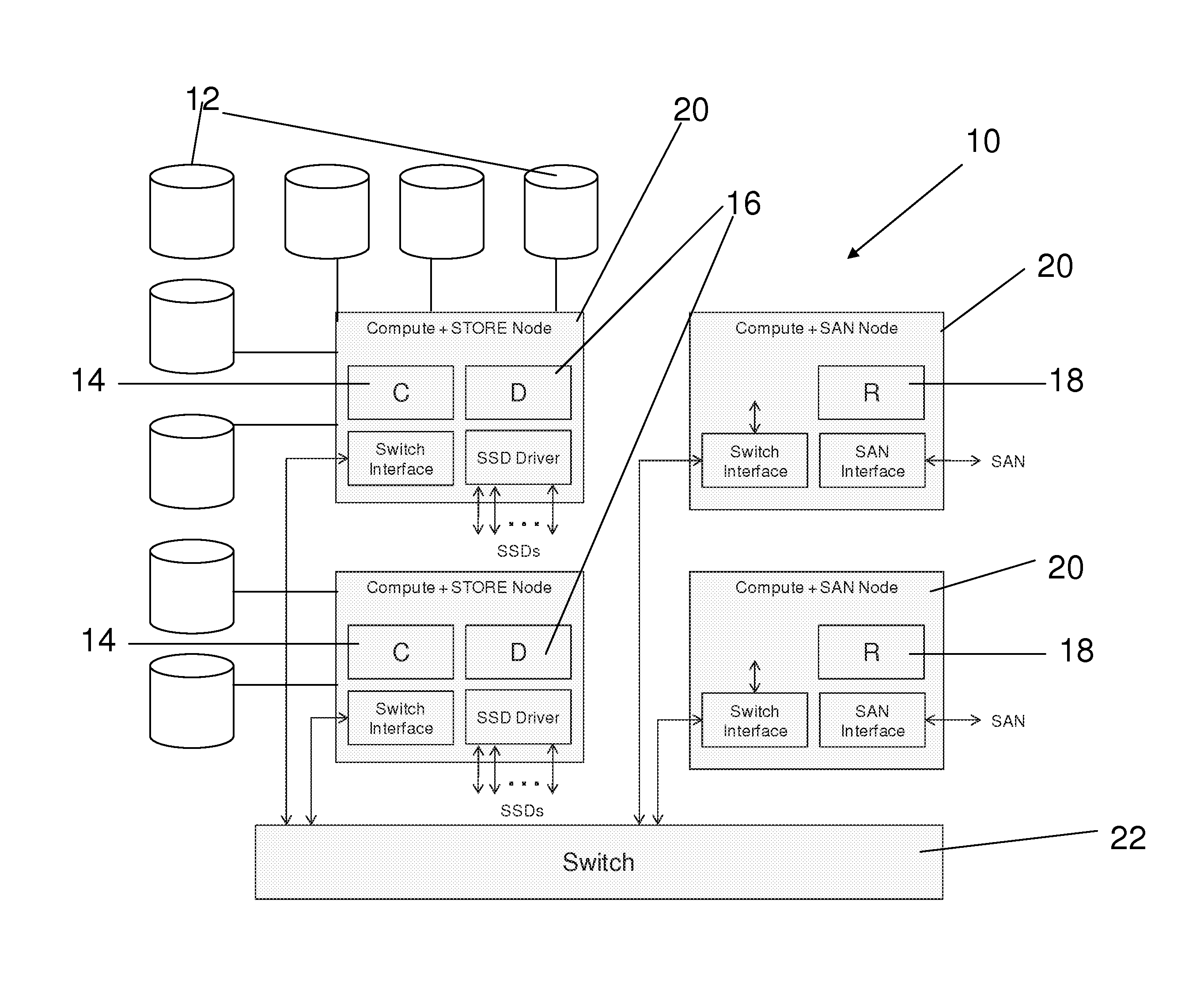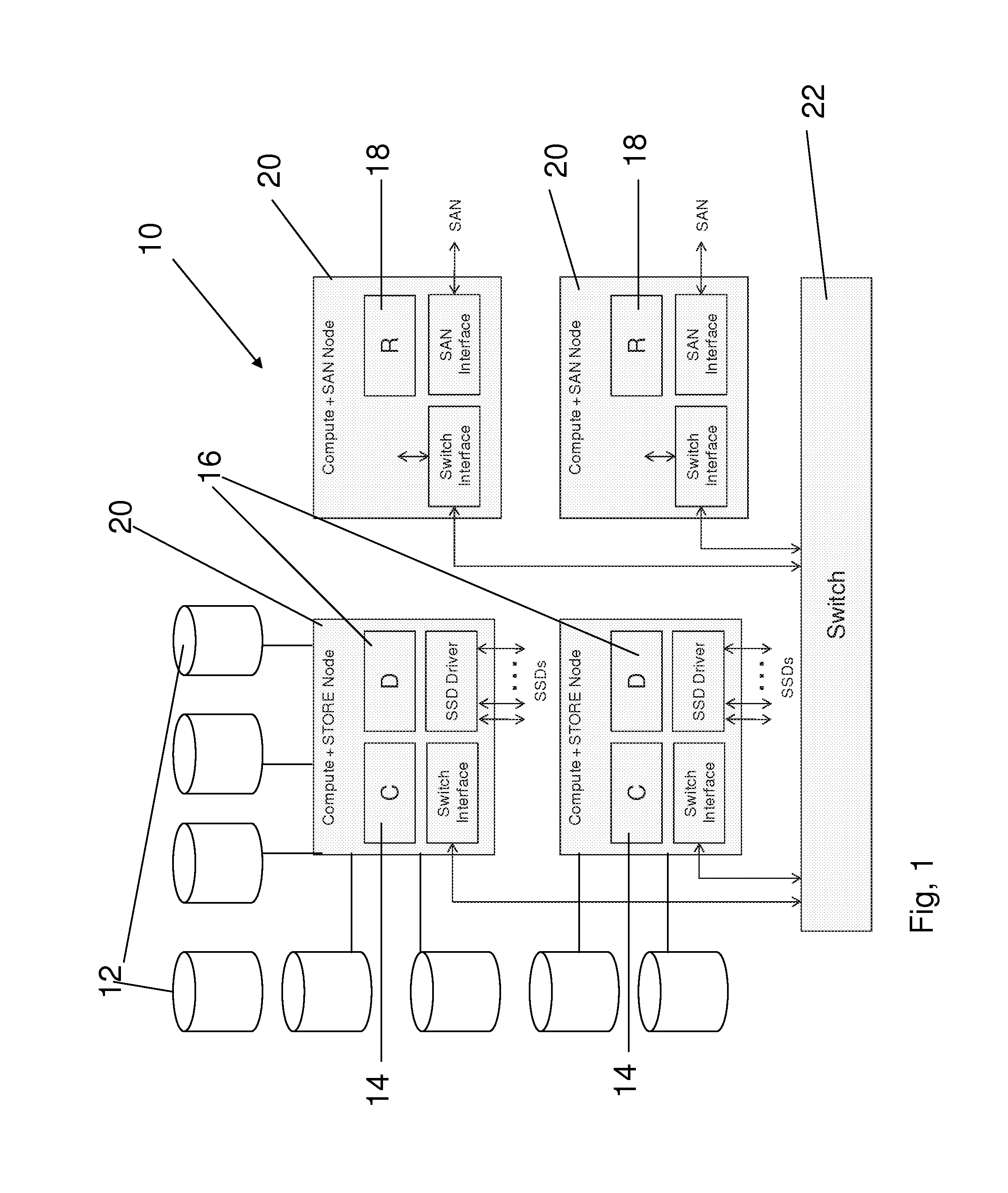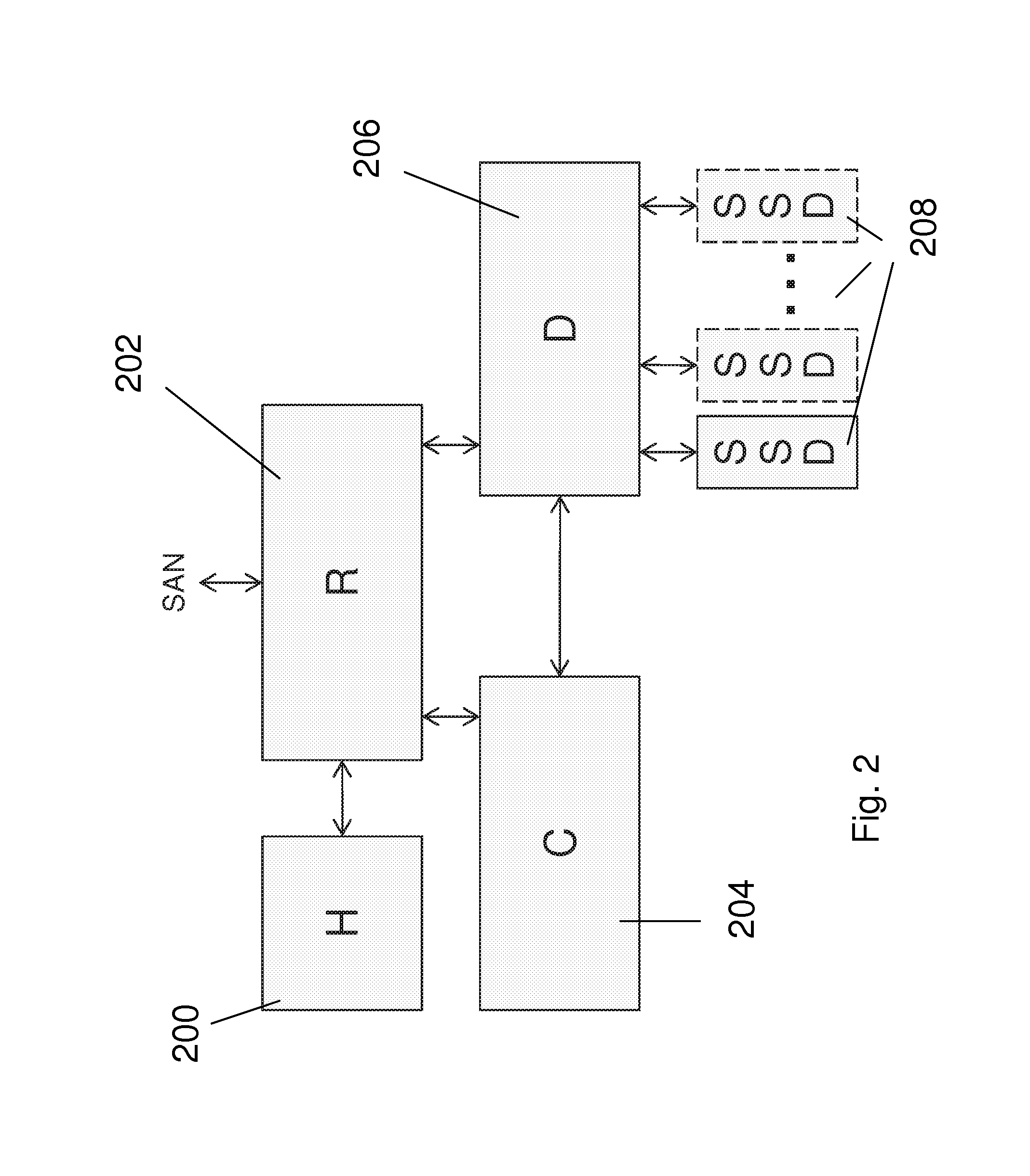Scalable block data storage using content addressing
a data storage and content addressing technology, applied in the field of scalable block data storage using content addressing, can solve the problems of increasing the cost, space and power consumption of the storage system required increasing the cost, space and power consumption of the storage system to support ever increasing amounts of information, and reducing the overall application performance of the system. achieve the effect of unfavorable system performance and capacity, and unfavorable data storage performan
- Summary
- Abstract
- Description
- Claims
- Application Information
AI Technical Summary
Benefits of technology
Problems solved by technology
Method used
Image
Examples
Embodiment Construction
[0065]The present embodiments comprise a networked memory device comprising multiple memory storage units arranged for content addressable storage of data. The data is transferred to and from the storage units using separate data and control planes. Hashing is used for the content addressing, and the hashing produces evenly distributed results over the allowed input range. The hashing defines the physical addresses so that data storage makes even use of the device resources.
[0066]A relatively small granularity may be used, for example with a page size of 4 KB, although smaller or larger block sizes may be selected at the discretion of the skilled person. This enables the device to detach the incoming user access pattern from the internal access pattern. That is to say the incoming user access pattern may be larger than the 4 KB or other system-determined page size and may thus be converted to a plurality of write operations within the system, each one separately hashed and separatel...
PUM
 Login to View More
Login to View More Abstract
Description
Claims
Application Information
 Login to View More
Login to View More - R&D
- Intellectual Property
- Life Sciences
- Materials
- Tech Scout
- Unparalleled Data Quality
- Higher Quality Content
- 60% Fewer Hallucinations
Browse by: Latest US Patents, China's latest patents, Technical Efficacy Thesaurus, Application Domain, Technology Topic, Popular Technical Reports.
© 2025 PatSnap. All rights reserved.Legal|Privacy policy|Modern Slavery Act Transparency Statement|Sitemap|About US| Contact US: help@patsnap.com



